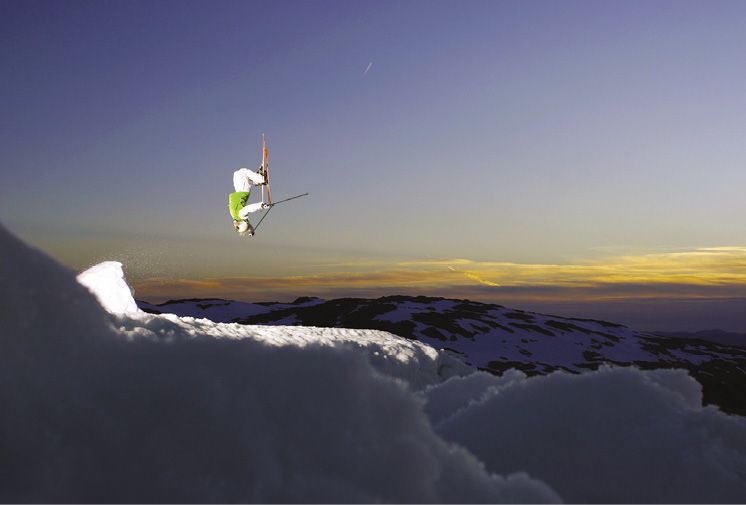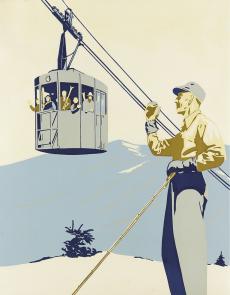SKIING HISTORY
Editor Seth Masia
Managing Editor Greg Ditrinco
Consulting Editor Cindy Hirschfeld
Art Director Edna Baker
Editorial Board
Seth Masia, Chairman
John Allen, Andy Bigford, John Caldwell, Jeremy Davis, Kirby Gilbert, Paul Hooge, Jeff Leich, Ron LeMaster, Bob Soden, Ingrid Wicken
Founding Editors
Morten Lund, Glenn Parkinson
To preserve skiing history and to increase awareness of the sport’s heritage
ISHA Founder
Mason Beekley, 1927–2001
ISHA Board of Directors
Rick Moulton, Chairman
Seth Masia, President
Wini Jones, Vice President
Jeff Blumenfeld, Vice President
John McMurtry, Vice President
Bob Soden (Canada), Treasurer
Einar Sunde, Secretary
Richard Allen, Skip Beitzel, Michael Calderone, Dick Cutler, Ken Hugessen (Canada), David Ingemie, Joe Jay Jalbert, Henri Rivers, Charles Sanders, Christof Thöny (Austria), Ivan Wagner (Switzerland)
Presidential Circle
Christin Cooper, Billy Kidd, Jean-Claude Killy, Bode Miller, Doug Pfeiffer, Penny Pitou, Nancy Greene Raine
Executive Director
Janet White
janet@skiinghistory.org
Membership Services
Laurie Glover
(802) 375-1105
laurie@skiinghistory.org
Corporate Sponsorships
Peter Kirkpatrick
(541) 944-3095
peterk10950@gmail.com
Bimonthly journal and official publication of the International Skiing History Association (ISHA)
Partners: U.S. Ski and Snowboard Hall of Fame | Canadian Ski Museum and Hall of Fame
Alf Engen Ski Museum | North American Snowsports Journalists Association | Swiss Academic Ski Club
Skiing History (USPS No. 16-201, ISSN: 23293659) is published bimonthly by the International Skiing History Association, P.O. Box 1064, Manchester Center, VT 05255.
Periodicals postage paid at Manchester Center, VT and at additional mailing offices. Postmaster: Send address changes to ISHA, P.O. Box 1064, Manchester Center, VT 05255
ISHA is a 501(c)(3) public charity. EIN: 06-1347398
Written permission from the editor is required to reproduce, in any manner, the contents of Skiing History, either in full or in part.
Catching up with Kari Traa
The Norwegian mogul champ is back home in Voss, raising kids and running a $70 million company. But she still flies through the air.
At 14, Kari Traa started skiing moguls in oversized boots and on clunky 190cm skis. Three years later, she represented Norway at the 1992 Albertville Olympics.
“I think they chose me because I was young and fearless,” says Traa. Fearless, that is, until she heard that the International Olympic Committee (IOC) required female athletes to undergo gender verification. (The IOC’s blanket practice, called “femininity control,” was eliminated in 1999.) “I was like, ‘Shit! You have to be naked in front of people?’” she recalls. “I was 17. My coach drove [to the lab] so fast and it was so foggy. I remember thinking, ‘I hope we crash the car. Make this life over.’”

Fahlèn Courtesy Kari Traa
At the clinic were three guys in long white coats and one woman who “looked like a man because she had kind of a mustache,” says Traa. “I started to undress and they were like, ‘No, just sit on this chair.’ They put a Q-tip in my mouth, put it in a machine, and said, ‘You are a woman. Congratulations!’ After that, I said to myself, ‘Kari, for the rest of your life, don’t be nervous for something you don’t know anything about.’”
The Albertville Games would test her courage again.
In qualifying, Traa says, “I was super-ready. I started skiing. ‘Yes! This is going good!’ My first jump—super good! I skied down into my second jump and when I started to lift, I felt a whoops! All of a sudden, my boobs come falling out. My bra broke! It was not a sports bra; it probably had nature [scenes] on it. I landed, and then you have to ski bumps into the finish line. At that time, I was kind of a big girl. I felt like the whole world saw that my boobs were all over. You know, I hated buying my own bras, underwear, all that stuff, so I always grabbed it from my older sister. When I told her, ‘Your bra broke; it’s not strong enough,’ she was like, ‘That’s MY fault?’
“In the finish, I was bending over my poles. My eyes were not focused on the result [14th], they were focused on what to protect. All the cameras are on you, and it’s like, ‘Shit! It’s not the right time.’”
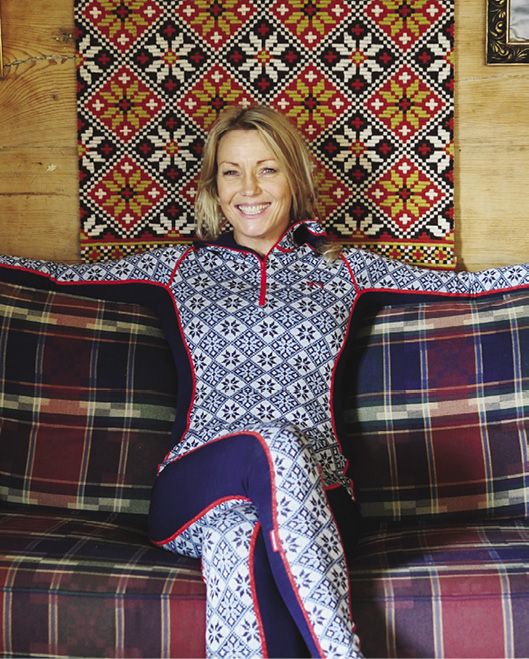
Traa went on to win Olympic bronze in 1998, gold in 2002 and silver in 2006. Now, 15 years after her final Games in Torino, Traa remains the most decorated moguls skier in Olympic history. She also won three overall freestyle World Cup globes and four world championship titles and was among the first women to perform a cork 720 (a double spin, off-axis).
“She never got stale, just kept improving with the times,” says Trace Worthington, an Olympic aerialist-turned-TV-commentator.
Two years after her Olympic debut, Traa missed her home Olympics, in Lillehammer, having blown out her knee in training five days before the opening ceremony. “I was lying in the course screaming,” she says, “but, actually, I wasn’t that frustrated” about missing the Games. In 1993, her brother, Arthur, had undergone surgery to remove a tumor in his brain stem. “The doctor said, ‘We don’t know if he will survive. You can say “bye” if you want.’” She adds, “We just said, ‘It’s gonna be good. We’ll wait for you to awake.’ After that, sports weren’t the biggest thing in my life.”

and Arthur.
Arthur is nearly 51 now. He walks off balance, is deaf in one ear and can’t see well with his lone working eye, but he still has good humor. “He’s the guy I have most respect for because he never complains,” Traa says. “He was the wild one. He did so much cool stuff. Then, suddenly, when he was 22, it was different.”
After the missed Olympics in 1994, Traa’s new coach was Lasse Fahlèn, a giant Swede who was “built like a woodsman, cutting down trees and massaging bears,” Traa jokes. “People told me he doesn’t like girls skiing moguls. Ja, ja, I was just happy to get a coach. In the end, we were the perfect match. He taught me that we have to do difficult things. Jump longer and higher, do harder jumps than the other girls. Try and try, and one day, we will make it. We stuck to our plan.”
Traa scored her first World Cup win at Mont Tremblant in January 1997 and repeated three days later at Lake Placid. The following year, she took bronze in Nagano, her second Olympics. At the time, she weighed 180 pounds (82 kilos). “But no one told me I was big,” she says. “Only my granddad. But because of my knee problems, the doctors, Lasse, and I decided to change my training. I lost 15 kilos [33 pounds]. After that, it was so much easier to ski. When I landed, I was quick up again, instead of boof,” sinking into the troughs between bumps.
In 1999, Traa won her first world championship title and by the 2002 Olympics in Salt Lake City, she was not only dominant, but a massive media sensation. Prior to winning five of the six World Cup moguls events leading up to the Winter Games, Traa posed semi-nude for Ultrasport magazine. “Now I can show the people of Norway who love cross-country skiing, there is a different sport called moguls,” she quipped. The photos set the media ablaze.
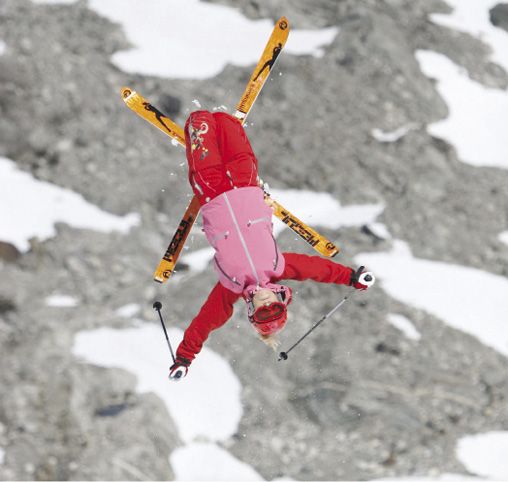
competition after winning a silver medal
at the Torino Olympics.
In the Olympic final, American Shannon Bahrke led the field with one skier to go: Traa. Sixty to 70 percent of Norwegian households were watching, broadcasters would later tell her coach. Billboards all over Oslo had predicted Traa would win. The pressure was unbelievable.
“But Kari was never afraid of anything,” says Fahlèn. In 2000, Traa had even raced downhill in the Norwegian championships, finishing 19th. “She had no clue how fast she was and forgot to brake in the finish area,” adds Fahlèn about that race.
On her final run in Salt Lake, Traa nailed a 360 iron cross on the first air and an upright triple twister on the second. When she saw No. 1 on the scoreboard, her first thought was, “Okay! Easy press conference. If I had been number two or number three, they would talk about the pictures.”
And then?
“I was 28 and felt old because I hadn’t studied anything,” Traa says, but she was constantly creating. “I wanted to fix old furniture or build things. I traveled with wood-carving machines, knives and planks, so I always had young American guys in my room, like Travis Cabral, Jeremy Bloom, trying it out.”
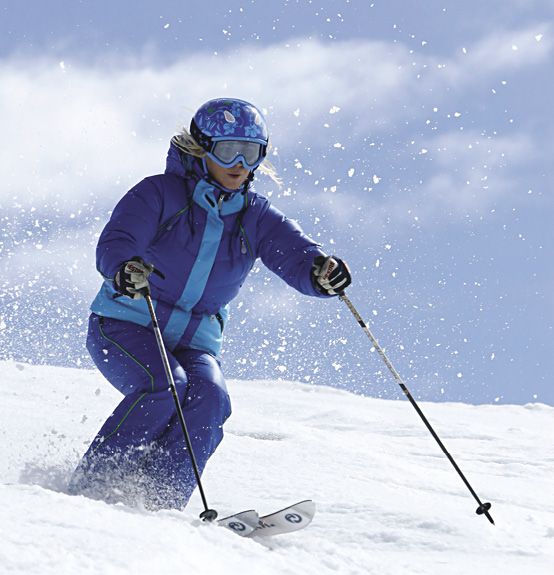
photo.
She was also a chronic knitter. “I don’t think any athlete traveled with so much yarn and knitting pins,” Traa says. She began customizing her own skiwear as mainstream styles at the time, she notes, were “a sea of sameness on the slopes. Masculine, boring colors, and unflattering fits.” This was especially true of women’s high-performance athletic wear. Says Traa, “This was even before ‘shrink it and pink it.’ There was just shrink it.”
In the spring of 2002, she approached Bula, the Colorado-based company that had sponsored her early on. The folks there knew Traa had been crocheting her own hats and slapping on the Bula logo, so they told her to continue making hats and they would sell them. According to Traa, “I said, ‘Great!’ There was no plan to sell 10 or 100 million kroner. We just tried it. The next year, we made pants, shirts and hoodies.”
By now, her eponymous women’s clothing company—renowned for its base layers—has become a juggernaut, with sales of $70 million in 2020. An all-female design team produces more than 200 styles a year. Today, both the Bula and Kari Traa companies are owned by the Norwegian firm Active Brands. Sixty-five percent of Kari Traa’s sales are outside of Norway.
Her ingenuity continued to serve her well on the slopes, too. In 2003, the International Ski Federation allowed moguls skiers to perform inverted tricks. That required new training, on trampolines and water jumps. “I’m glad I kept going!” Traa says, even if it meant “trying to be a gymnast at 28.”
That year, she lost the season-long points race for the World Cup moguls title to Bahrke at the final stop in Voss, Traa’s hometown, in front of a legion of Norwegians. Denied a third consecutive moguls globe, Traa switched disciplines, flew to Japan and placed fifth in a World Cup ski cross 10 days later. The extra points allowed Traa to claim the overall freestyle globe—her second of three.
“It kind of bummed me out,” Bahrke says of losing the overall championship. “But she was smart. She did something that I don’t even think I was aware that we could do.”
Defending Olympic gold was another story. In 2006 in Torino, Traa took silver behind Jennifer Heil of Canada. She ended her World Cup career at Apex, British Columbia, that March. “I was ready,” she says. “The next year, I missed it a lot, but then I found the perfect man, had kids and then, you know, it’s over. I stopped when I knew I could win. I think that’s a good ending.”
Traa has hardly slowed down, though. In 2011, she finished second on Norway’s version of Dancing with the Stars, an experience she called “fun and scary. I had never danced sober [before that].”
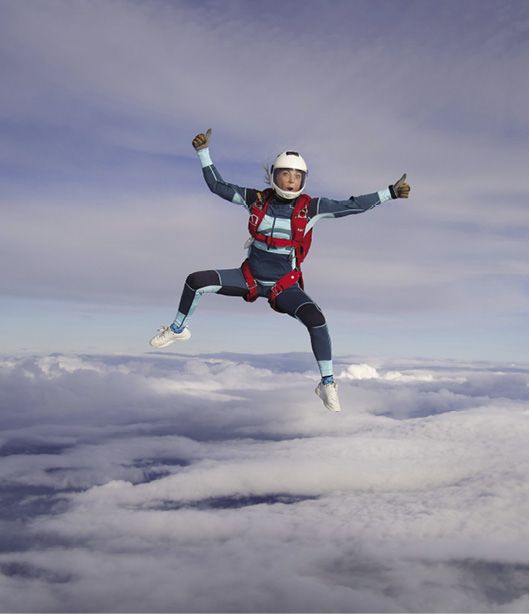
Voss, Norway.
At 47, she can still rip a mad line through moguls and spontaneously flip off a two-story balcony into fresh snow—just for fun. Traa lives in Voss with her partner, skydiving instructor Lars Haukom, their two daughters, Hedda, 10, and Silja, 8, two pigs, a dog and, until recently, a slew of quail in their bathroom.
Ever fearless, she skydives on a four-woman team that does vertical [head down] flying and on Team Silverfox with three men who specialize in formation flying—even though she doesn’t have the requisite grey hair. “We’ll give you a couple years,” her teammates told her when she joined, but she still has no grey.
Sadly, despite Traa’s efforts from 2006 to 2011 to bring more girls into skiing moguls, Norway stopped funding its national moguls team in 2019. The last of Traa’s recruits, Hedvig Wessel, retired after the 2018 PyeongChang Olympics where, for the second consecutive Winter Games, she was the lone Norwegian woman competing in moguls.
In the annals of freestyle skiing, Traa might not have matched Hannah Kearney’s 10 crystal globes or Donna Weinbrecht’s winning percentage (41 percent), but she’s topped every moguls skier’s Olympic medal cache and left an indelible impression on the entire tour with her style and attitude.
“Kari was a total badass!” says Bahrke. “She always went bigger than everyone else. Nothing ever fazed her, nothing was going to stop her. The course could be scary, bulletproof, jumps not good, snowing sideways, and all of us would just be over it—and she comes out and goes enormous, landing it, skiing awesome. She always, always did that. She really taught me that to be the best, you couldn’t have any excuses.”
Says Fahlèn, who coached the U.S. moguls team from 2006 to 2014 after spending 10 years working with Traa, “Kari was one of the best athletes I ever met. Unbelievably strong, so tough. She jumped like the men sometimes, almost as fast as the men sometimes. She never went safe. She wanted to be better than safe.”
At Sochi in 2014, Traa made one last Olympic appearance, in a broadcast booth. Four years later, she passed on a chance to work in PyeongChang. “I don’t know the people anymore, and the whole judging system changed,” she explains. “The maximum score is 100. When I was competing, it was 30.”
But moguls skiing still holds a piece of her heart. “I really miss the time with Lasse when we were on tour,” Traa says. “I should just split all my medals and send them over to him in Sweden because they’re not only mine. They’re Kari-and-Lasse team medals.” 
Sportswriter Aimee Berg has written for the Associated Press, New York Times, USA Today, ESPN, Outside Online and dozens of other print and broadcast outlets. This is her first piece for Skiing History.
Table of Contents

Corporate Sponsors
ISHA deeply appreciates your generous support!
WORLD CHAMPIONSHIP ($3,000 AND UP)
Gorsuch
Polartec
Sport Obermeyer
Warren and Laurie Miller
CHAMPIONSHIP ($2,000)
Fairbank Group: Bromley, Cranmore, Jiminy Peak
Hickory & Tweed Ski Shop
Rossignol
Snowsports Merchandising Corp.
WORLD CUP ($1,000)
Aspen Skiing Company
Berkshire East Mountain Resort/Catamount Mountain Resort
Bogner
Boyne Resorts
Dale of Norway
Darn Tough Vermont
Dynastar | Lange | Look
Gordini USA Inc. | Kombi LTD
HEAD Wintersports
Intuition Sports, Inc.
Mammoth Mountain
Marker-Volkl USA
National Ski Areas Association
Outdoor Retailer
Ski Area Management
Ski Country Sports
Sports Specialists, Ltd.
Sun Valley Resort
Vintage Ski World
World Cup Supply
GOLD ($700)
Larson's Ski & Sport
Race Place | BEAST Tuning Tools
The Ski Company (Rochester, NY)
Thule
SILVER ($500)
Alta Ski Area
Boden Architecture PLLC
Dalbello Sports
Deer Valley
Ecosign Mountain Resort Planners
Fera International
Holiday Valley
Hotronic USA, Inc. | Wintersteiger
MasterFit Enterprises
McWhorter Driscoll, LLC
Metropolitan New York Ski Council
Mt. Bachelor
New Jersey Ski & Snowboard Council
Russell Mace Vacation Homes
Schoeller Textile USA
Scott Sports
Seirus Innovations
SeniorsSkiing.com
Ski Utah
Steamboat Ski & Resort Corporation
Sundance Mountain Resort
Swiss Academic Ski Club
Tecnica Group USA
Timberline
Trapp Family Lodge
Western Winter Sports Reps Association
World Pro Ski Tour
Yellowstone Club

